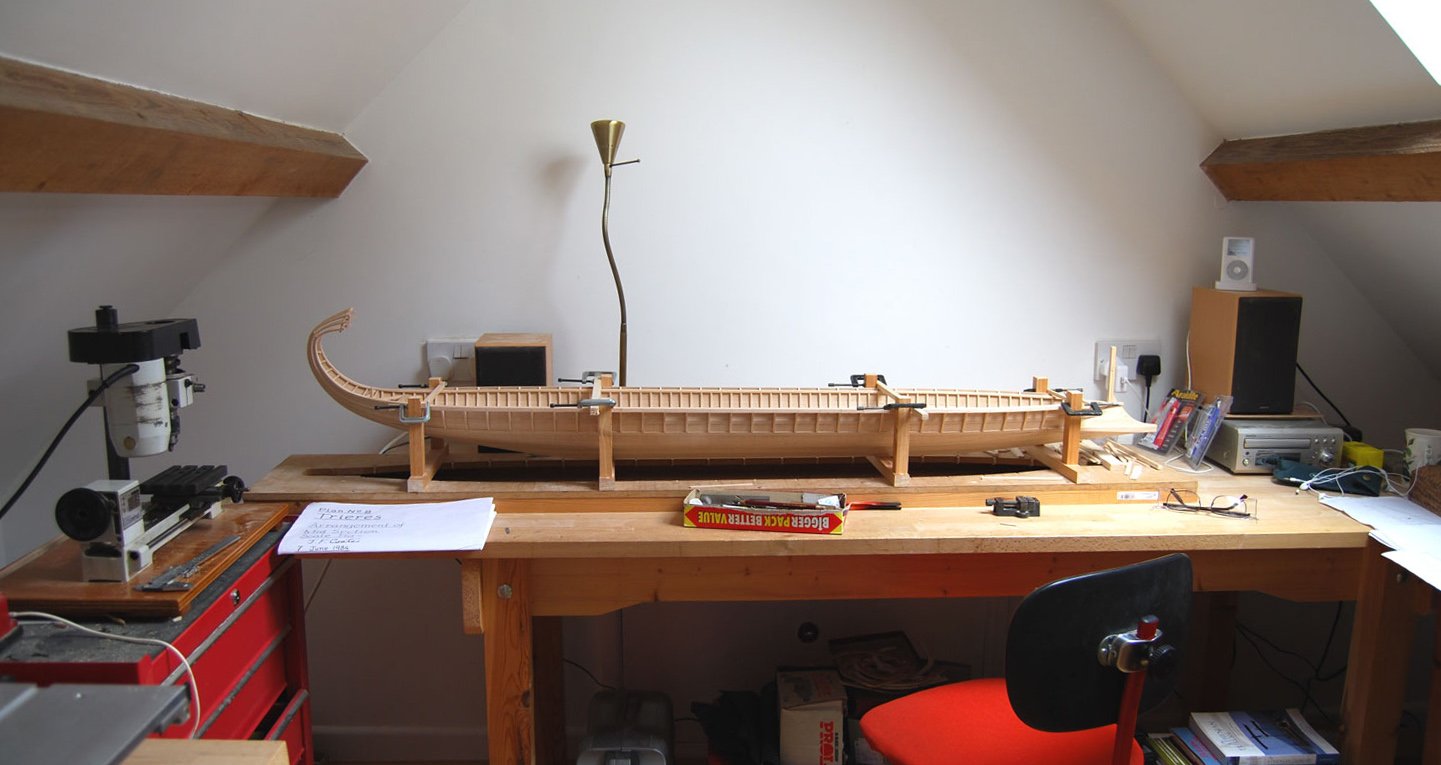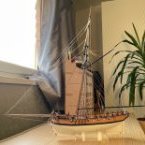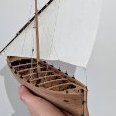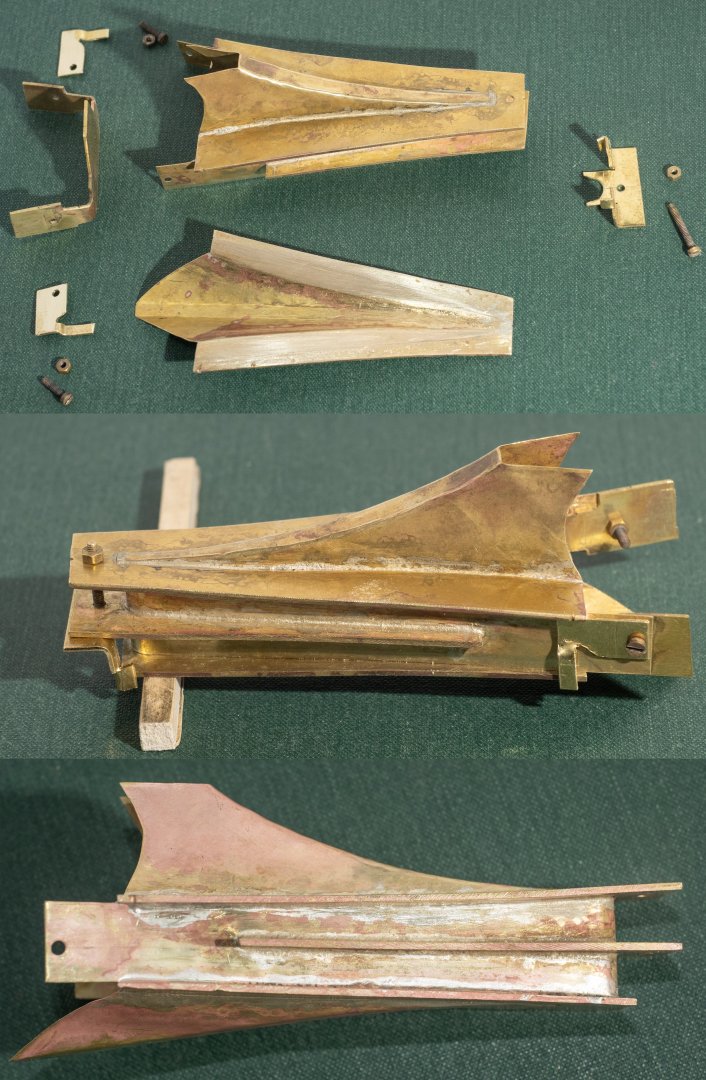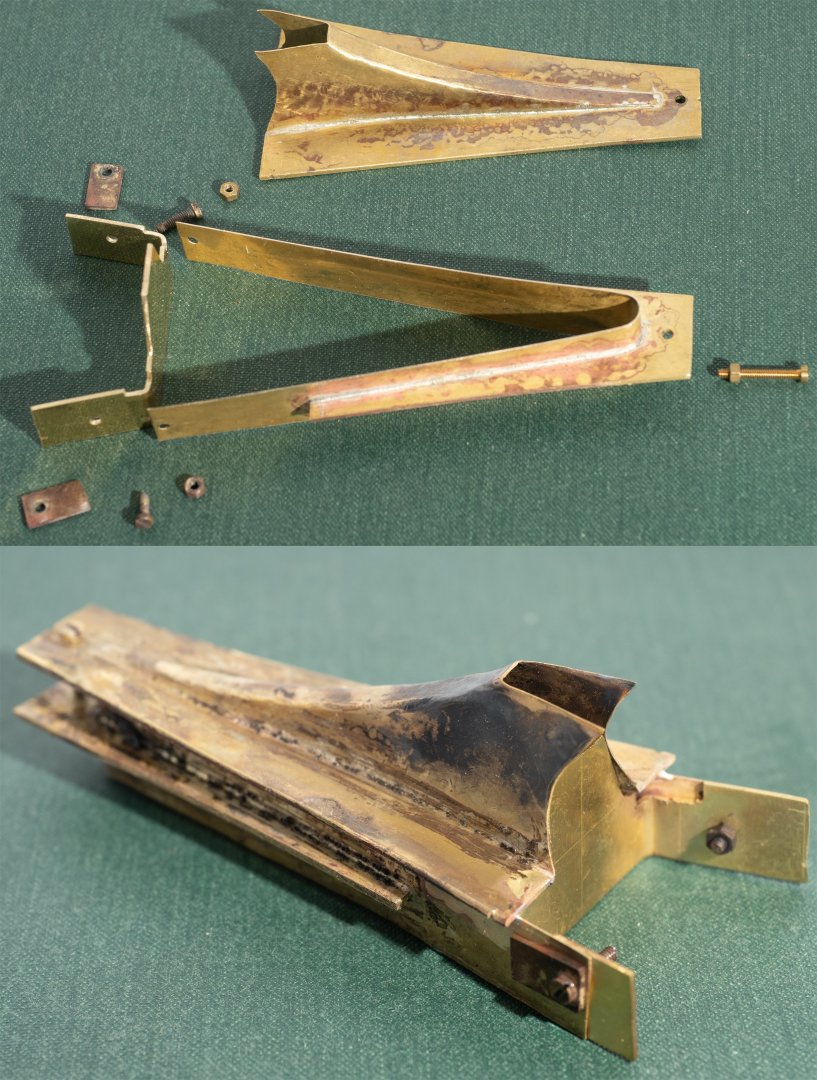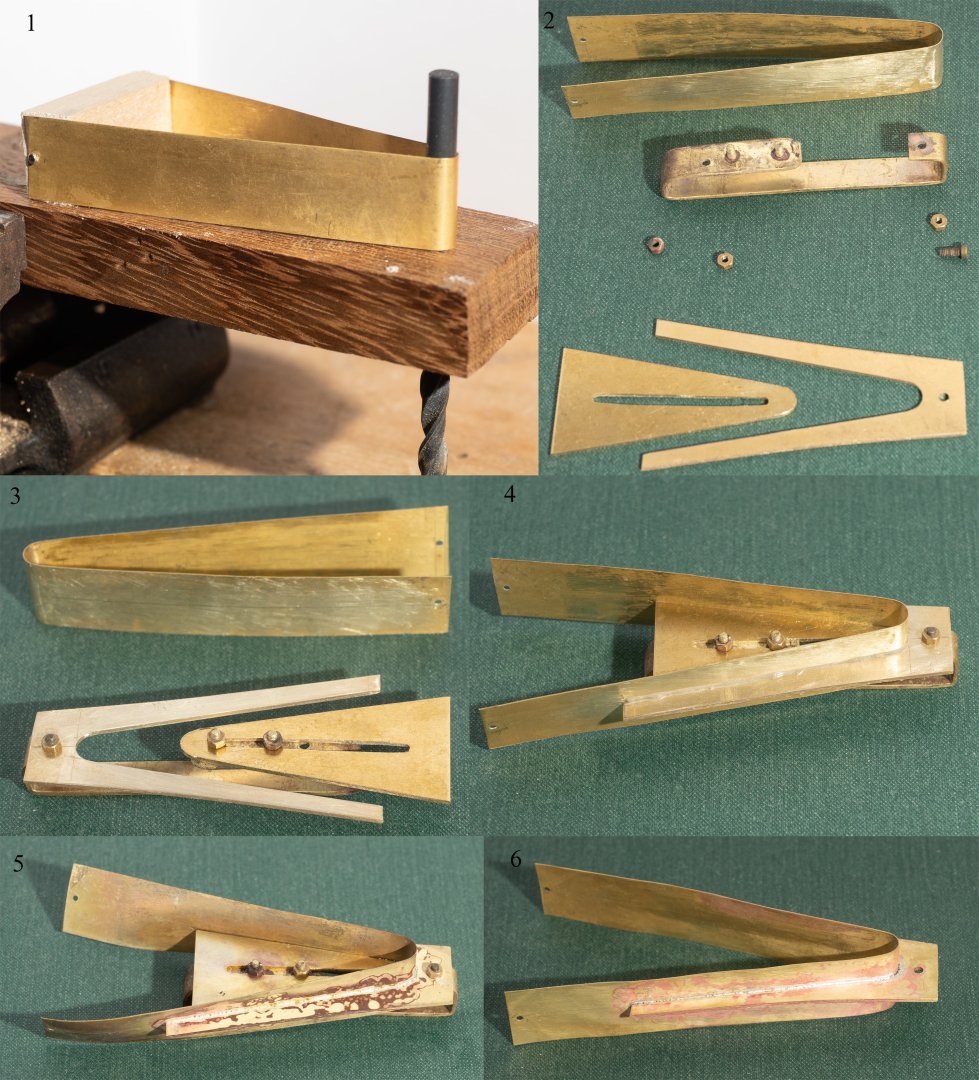-
Posts
220 -
Joined
-
Last visited
Profile Information
-
Gender
Male
-
Location
Ivybridge, England
-
Interests
Sailing, Ship Modelling, Software Development
Recent Profile Visitors
-
 GrandpaPhil reacted to a post in a topic:
Trireme Olympias by Richard Braithwaite
GrandpaPhil reacted to a post in a topic:
Trireme Olympias by Richard Braithwaite
-
 GrandpaPhil reacted to a post in a topic:
Trireme Olympias by Richard Braithwaite
GrandpaPhil reacted to a post in a topic:
Trireme Olympias by Richard Braithwaite
-
 GrandpaPhil reacted to a post in a topic:
Trireme Olympias by Richard Braithwaite
GrandpaPhil reacted to a post in a topic:
Trireme Olympias by Richard Braithwaite
-
 kurtvd19 reacted to a post in a topic:
Trireme Olympias by Richard Braithwaite
kurtvd19 reacted to a post in a topic:
Trireme Olympias by Richard Braithwaite
-
 kurtvd19 reacted to a post in a topic:
Trireme Olympias by Richard Braithwaite
kurtvd19 reacted to a post in a topic:
Trireme Olympias by Richard Braithwaite
-
 mgatrost reacted to a post in a topic:
Trireme Olympias by Richard Braithwaite
mgatrost reacted to a post in a topic:
Trireme Olympias by Richard Braithwaite
-
 mgatrost reacted to a post in a topic:
Trireme Olympias by Richard Braithwaite
mgatrost reacted to a post in a topic:
Trireme Olympias by Richard Braithwaite
-
 mgatrost reacted to a post in a topic:
Trireme Olympias by Richard Braithwaite
mgatrost reacted to a post in a topic:
Trireme Olympias by Richard Braithwaite
-
 KLarsen reacted to a post in a topic:
Trireme Olympias by Richard Braithwaite
KLarsen reacted to a post in a topic:
Trireme Olympias by Richard Braithwaite
-
 Siggi52 reacted to a post in a topic:
Trireme Olympias by Richard Braithwaite
Siggi52 reacted to a post in a topic:
Trireme Olympias by Richard Braithwaite
-
Attaching the lower subassembly: I've been gearing myself up for this one. The last of the major joints and the final confirmation of whether I can make this fabrication accurately enough to fit my model. The upper image shows the two subassemblies to be joined and the collection of items Ive made to try to keep them aligned during the soldering operation. the next image shows a dry assembly of the pieces. A lot of going backwards and forwards from the model to adjust the taps on my fore and aft jigs so that the two assemblies are aligned. The lower image shows the ram assembly after is bath in "Picklean" The good news and huge relief is that it actually fits! It was the right decision to go for fabrication rather than lost wax casting. Although I could probably have made a accurate 3D model by photogrametry and modelling in blender all the uncertainties over shrinkage during the casting process would have been a real problem. Also the minimum casting wall thickness of 0.6mm was a show stopper for me. There is still quite a lot of work to do, shaping the ram plates and fitting various decorative pieces, but the basic structure is there (and hopefully survives the rest of the work!). And then the cleaning...All that copper discoloration to remove and all that silver solder (next time I should use that yellow ochre powder Kurt refers to above...)
-
Some thoughts on filing...I've been doing a lot of this recently and it made me think of my time at the Devonport Dockyard Apprentice Training Center when I first joined. The first thing they do with Apprentices is filing. Lots of filing, and then more filing, and just when you thought you had done enough filing... more filing...(e.g. now make a chess board out of 64 identical cubes of steel...). Its amazing how accurate you can be with a file with the right attitude and suitable encouragement! I asked the trainers what this was all about and they replied that it is rather like getting raw military recruits to march up and down the square for hour after hour after hour.... Its all about taking a teenager of the street and engendering the right attitude! I'm still reaping the benefits now...
-
Kurt, Many thanks for the suggestion. Just ordered my copy of Ken Foran's book on amazon. All the best Richard
-
 Richard Braithwaite reacted to a post in a topic:
Trireme Olympias by Richard Braithwaite
Richard Braithwaite reacted to a post in a topic:
Trireme Olympias by Richard Braithwaite
-
Today attached the Mid ram assembly to the upper ram assembly. 1 The upper edge of the mid ram cladding was shaped to fit the curve of the upper ram plate. This requires a high degree of accuracy as silver solder has very little gap filling ability. 2. Constructed a jig to hold the aftermost (highly flexible, particularly when heat is applied) part of the mid ram cladding firmly and at the right distance apart to closely fit the ram timbers (upper image below) 3. The existing welds were protected using "TEMPGUARD" heat dissipating gel to reduce the risk of them falling apart during the soldering process. 4. Silver solder/flux paste (Easy 705-725 deg C to get some distance from the medium solder used previously...) applied and the two pieces brought together for soldering. I ended up using the large torch for this even though it wasn't possible to be so precise with the heating,a s I found I needed the heat input. 5. The result (bottom image) after soldering but before jig removal and "pickcleaning". I was very pleased at the accuracy I achieved with this. The ram fits very snugly on the timbers (so far). I also managed to engineer the jig to keep it clear of any solder so it didn't require the endless filing I had to do previously. I am learning as I go along...
-
 Richard Braithwaite reacted to a post in a topic:
Bower anchor project by Sizzolo
Richard Braithwaite reacted to a post in a topic:
Bower anchor project by Sizzolo
-
Mid part of the ram in construction (Part 1) Image 1: Shows the mid cladding plate being formed around a 5mm drill to fit the radius at the front of the wooden ram substructure. Image 2: The Mid Ram plate (the fork shape piece at the lower right hand corner of image 2) is shaped to fit the wooden ram substructure and the slotted plate is shaped to fit inside this with a clearance of 0.2mm all round to allow for the thickness of the cladding plate. The drilled bend plate in the middle of image 2 is designed to hold the mid ram plate firmly while the slotted plate can be pushed forward to force the cladding plate to the right profile. I have soldered (using medium silver solder) the two bolts that hold the slotted plate as I found that it was over fiddly having these loose). Image 3: The silver solder (medium solder/flux paste) is applied to both the cladding piece and the ram plate and then the cladding plate is lowered into the jig and the slotted piece pushed forward to force the two parts together in the required alignment. Image 4: Shows the result with the silver solder paste applied. Image 5: Shows all the distortion that takes place with the 0.2mm plate when you heat it up high enough for the medium solder to melt! Image 6: shows it after cleaning with picklean and roughly straightened out. Clear as mud? Ive left a couple of mm of "green" each side of the cladding sheet which I now need to shape to fit the space between the upper and lower ram assemblies...
-
For all of you who are NRG members I have done a shop note in the latest journal ( Vol 70 No 4) about the 1:24 scale Athenian manikins that i built for this model that expands on the content of this log.
-
Here are the upper and lower pieces and the mid ram plate loosely held on to the wooden ram structure. I'm quite pleased with the fit I've managed to achieve so far (there have been a few "test pieces" which didn't work out! - but were useful for practicing soldering of these very thin plates...) . The real challenge is going to be aligning the three pieces when I connect the three pieces together.
-
Here are some images of the lower part of the Ram in construction: The lower image is a dry fit of the jigging/fixing arrangement prior to application of the solder paste.
-
Loracs, The plans I am using are hand drawn my John Coates for the full size Olympias reconstruction. They can be obtained from the Trireme Trust Archivist (Jude Brimmer <archivist@wolfson.cam.ac.uk>).
-
 Richard Braithwaite reacted to a post in a topic:
Trireme Olympias by Richard Braithwaite
Richard Braithwaite reacted to a post in a topic:
Trireme Olympias by Richard Braithwaite
-
Upper part of ram assembly in construction: Upper image shows the component pieces (upper sheathing from 0.2mm brass and upper ram plate from 1mm brass) together with a jig/clip to hold the two pieces in place while brazing. I used a silver solder paste of medium melting point (720 - 765 degrees centigrade) from Cooksongold and applied it to both parts along the contact line. By experimenting on a test piece I found that the larger blowtorch was needed to get enough heat into the piece for the solder to flow. The results are shown in the middle image. As you can see excess solder has flowed over part of the upper ram plate which will need cleaning off. The clip/jig was removable, but the thin strip of brass had soldered to the piece so this needed filing away as well. The lower image shows the piece after soaking in "Picklean Safe pickling powder" (again from Cooksongold) and some cleaning with files sandpaper and a wire brush. I'm planning to leave final cleaning until the entire ram is constructed (there is a lot more heat to put into it before then). Apparently the pinkish areas are caused by loss of zinc on the surface of the heated brass, it seems very superficial so, hopefully I can remove it in the final clean...
-
There is a recording of an online workshop I did on this project with the Nautical Research Guild at the following link (you need to be a member to access these videos...): Nautical Research Guild - Authorization required A lot of the material for the workshop presentation is covered by this build log, but it does also cover some additional areas such as the early stages of the build (hull construction etc.), general discussion about the ship type etc.
-
Has anyone tried this? apparently it grows very slowly and has a very fine grain. I recently attended a presentation by David Hulse in Dartmouth. He has spent most of his life researching and building exceptional models of Atmospheric Steam engines, which he has donated to our local museum in Dartmouth. They are built to a scale of 1:12. He has used Japanese Oak for the wooden components and it looks very effective at this scale. He was Chief Engineer at Royal Doulton and used his knowledge and expertise to develop a process (and build the machinery) for producing thousands of 1:12 scale bricks using 17th Century methods for his models. Worth checking out his models at: The Hulse Collection - Dartmouth Museum
-
Not a bad idea. May try to source a softer alloy, although seem to be able to bash this plate into shape with enough anealing. Silver is a thought...The Athenians did pay for their fleet with silver, but there doesn't seem to be any evidence that they made the ships out of of it! I have several other issues to explore. 1. solder colour match. Ive got both gold and silver solder to experiment with. I did think of making the whole thing out of 9 ct gold, until i worked out the cost.... 2. making the thing to fit... probably would have been better to make the ram and then make the ship to fit. Oh well....
-
 Richard Braithwaite reacted to a post in a topic:
Trireme Olympias by Richard Braithwaite
Richard Braithwaite reacted to a post in a topic:
Trireme Olympias by Richard Braithwaite
-
 Richard Braithwaite reacted to a post in a topic:
Trireme Olympias by Richard Braithwaite
Richard Braithwaite reacted to a post in a topic:
Trireme Olympias by Richard Braithwaite
-
The answer, of course, is get a bigger blowtorch... My little Dremel blowtorch wasn't capable of heating the whole piece up enough to anneal it sufficiently. Last night I got a really hot (open) coal fire going and tried to use that. Placing the piece amongst the glowing coals did generate enough heat to get it glowing red hot, but it was difficult to control and I ended up melting the ends of two attempts. So today i bought a bigger blowtorch (the one on the left). That did the trick. Plenty of heat to get the piece red hot with sufficient control to avoid melting any of it... The results of about 15 cycles of heating a piece of 0.2mm thick brass sheet to red hot, quenching in water and bashing with a brass hammer over my former can be seen below. Not quite trimmed to fit yet, but I've achieved the shape I need...
-
The copper is a bit thin for brazing, but it does seem more maleable, so a copper ram might work (not sure about colour, although i could always get it electro plated...)
About us
Modelshipworld - Advancing Ship Modeling through Research
SSL Secured
Your security is important for us so this Website is SSL-Secured
NRG Mailing Address
Nautical Research Guild
237 South Lincoln Street
Westmont IL, 60559-1917
Model Ship World ® and the MSW logo are Registered Trademarks, and belong to the Nautical Research Guild (United States Patent and Trademark Office: No. 6,929,264 & No. 6,929,274, registered Dec. 20, 2022)
Helpful Links
About the NRG
If you enjoy building ship models that are historically accurate as well as beautiful, then The Nautical Research Guild (NRG) is just right for you.
The Guild is a non-profit educational organization whose mission is to “Advance Ship Modeling Through Research”. We provide support to our members in their efforts to raise the quality of their model ships.
The Nautical Research Guild has published our world-renowned quarterly magazine, The Nautical Research Journal, since 1955. The pages of the Journal are full of articles by accomplished ship modelers who show you how they create those exquisite details on their models, and by maritime historians who show you the correct details to build. The Journal is available in both print and digital editions. Go to the NRG web site (www.thenrg.org) to download a complimentary digital copy of the Journal. The NRG also publishes plan sets, books and compilations of back issues of the Journal and the former Ships in Scale and Model Ship Builder magazines.

